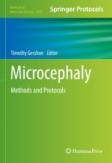Search
Search Results
-
Local synaptic inhibition mediates cerebellar granule cell pattern separation and enables learned sensorimotor associations
The cerebellar cortex has a key role in generating predictive sensorimotor associations. To do so, the granule cell layer is thought to establish...

-
Cerebellar Granule Cell
The cerebellar granule cells are the most numerous neurons of the brain. They are also among those with the simplest structure by emitting just four...
-
Granule Cell Migration and Differentiation
The develo** cerebellum granule cells migrate from their birthplace to their final destination. The active translocation of granule cells is...
-
Granule Cells and Parallel Fibers
The granule cells (GrCs) are the smallest and most numerous neurons of the brain and constitute the main elements of the granular layer of the...
-
Chorioamnionitis accelerates granule cell and oligodendrocyte maturation in the cerebellum of preterm nonhuman primates
BackgroundPreterm birth is often associated with chorioamnionitis and leads to increased risk of neurodevelopmental disorders, such as autism....

-
Cerebellar Granule Cell
The cerebellar granule cells are the most numerous neurons of the brain. They are also among those with the simplest structure by emitting just four...
-
Specification of Granule Cells and Purkinje Cells
Granule cells and Purkinje cells are the major populations of neurons in the cerebellum. Their specification depends on a combination of regional...
-
Disruption of protein geranylgeranylation in the cerebellum causes cerebellar hypoplasia and ataxia via blocking granule cell progenitor proliferation
The prenylation of proteins is involved in a variety of biological functions. However, it remains unknown whether it plays an important role in the...

-
NR1 Splicing Variant NR1a in Cerebellar Granule Neurons Constitutes a Better Motor Learning in the Mouse
As an excitatory neuron in the cerebellum, the granule cells play a crucial role in motor learning. The assembly of NMDAR in these neurons varies in...

-
PV-IRES-Cre mouse line targets excitatory granule neurons in the cerebellum
Parvalbumin-expressing inhibitory neurons (PV-INs) are critical for the balance and fine-tuning of complex neuronal circuits. Studies of PV-IN...

-
Adult-born dentate granule cells promote hippocampal population sparsity
The dentate gyrus (DG) gates neocortical information flow to the hippocampus. Intriguingly, the DG also produces adult-born dentate granule cells...

-
Cerebellar granule neurons induce Cyclin D1 before the onset of motor symptoms in Huntington’s disease mice
Although Huntington’s disease (HD) is classically defined by the selective vulnerability of striatal projection neurons, there is increasing evidence...

-
Progression of Alzheimer's disease parallels unusual structural plasticity of human dentate granule cells
Alzheimer´s disease (AD), the most common form of dementia in industrialized countries, severely targets the hippocampal formation in humans and...

-
Conventional and Spectral Karyoty** of Murine Cerebellar Granule Neuron Progenitors
Karyoty** remains an invaluable tool to researchers exploring the cause and consequence of genomic instability in biologic systems. It allows...
-

-
Burst firing is required for induction of Hebbian LTP at lateral perforant path to hippocampal granule cell synapses
High frequency burst firing is critical in summation of back-propagating action potentials (APs) in dendrites, which may greatly depolarize dendritic...

-
Dentate Gyrus Morphogenesis is Regulated by an Autism Risk Gene Trio Function in Granule Cells
Autism Spectrum Disorders (ASDs) are reported as a group of neurodevelopmental disorders. The structural changes of brain regions including the...

-
Cerebellar granule cell axons support high-dimensional representations
In classical theories of cerebellar cortex, high-dimensional sensorimotor representations are used to separate neuronal activity patterns, improving...

-
Reduced Cerebellar BDNF Availability Affects Postnatal Differentiation and Maturation of Granule Cells in a Mouse Model of Cholesterol Dyshomeostasis
Niemann-Pick type C1 (NPC1) disease is a lysosomal lipid storage disorder due to mutations in the NPC1 gene resulting in the accumulation of...

-
Complement Component C3 Loss leads to Locomotor Deficits and Altered Cerebellar Internal Granule Cell In Vitro Synaptic Protein Expression in C57BL/6 Mice
Complement component 3 (C3) expression is increased in the cerebellum of aging mice that demonstrate locomotor impairments and increased excitatory...

